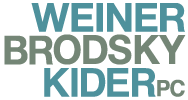New York City Bans Discrimination Based on Hair
The New York City Commission on Human Rights (Commission) recently issued a new set of guidelines (Guidelines) addressing racial discrimination in employment, school, or places of public accommodation based on an individual’s natural hair, hairstyle, or hair color. The Guidelines state that covered employers (which generally include employers with four or more employees) are engaging in unlawful race discrimination when they target natural hair or hairstyles associated with Black people, and/or harass Black employees based on their hair.
According to the Commission, Black hairstyles are protected racial characteristics under the New York City Human Rights Law (NYCHRL) because they are an inherent part of Black identity (under the Guidelines, the phrase “Black people” includes those who identify as African, African American, AfroCaribbean, Afro-Latin-x/a/o or otherwise having African or Black ancestry). The Guidelines provide that employers discriminate when their grooming or appearance policies limit or forbid natural hair or hairstyles associated with Black employees and applicants. The Guidelines set forth a number of examples of polices that constitute direct evidence of disparate treatment based on race and/or other relevant protected classes, including:
- policies that ban or require the alteration of natural hair or hair styled into twists, braids, cornrows, Afros, Bantu knots, fades, and/or locs, which the Guidelines state “are commonly associated with Black people”;
- policies that force employees to straighten, relax, or otherwise manipulate their natural hair to conform to employer expectations; and
- policies “banning hair that extends a certain number of inches from the scalp, thereby limiting Afros.”
The Guidelines further state that discrimination can also come in the form of facially neutral grooming policies related to characteristics that may not necessarily be associated with a protected class but that are discriminatorily applied. For example, according to the Guidelines, an employer violates the NYCHRL when it enforces a grooming policy banning the use of color/dye, extensions, and/or patterned or shaved hairstyles against Black employees only. The NYCHRL also prohibits covered employers from harassing, imposing unfair conditions, or otherwise discriminating against employees based on aspects of their appearance associated with their race (e.g., by requiring only Black employees to alter or cut their hair or risk losing their jobs). Finally, the Guidelines provide that employers may not ban, limit, or otherwise restrict natural hair or hairstyles associated with Black communities to promote a certain corporate image, because of customer preference, or under the guise of speculative health or safety concerns.
Also included in the Guidelines are a brief background of the NYCHRL, the history behind the hair and hairstyles at issue and related race discrimination, and the protections to be afforded to such hair and hairstyles in schools and places of public accommodation under the Guidelines. The Guidelines also remind individuals that they can file complaints with the Commission’s Law Enforcement Bureau or in court in connection with any discriminatory acts under the NYCHRL.

